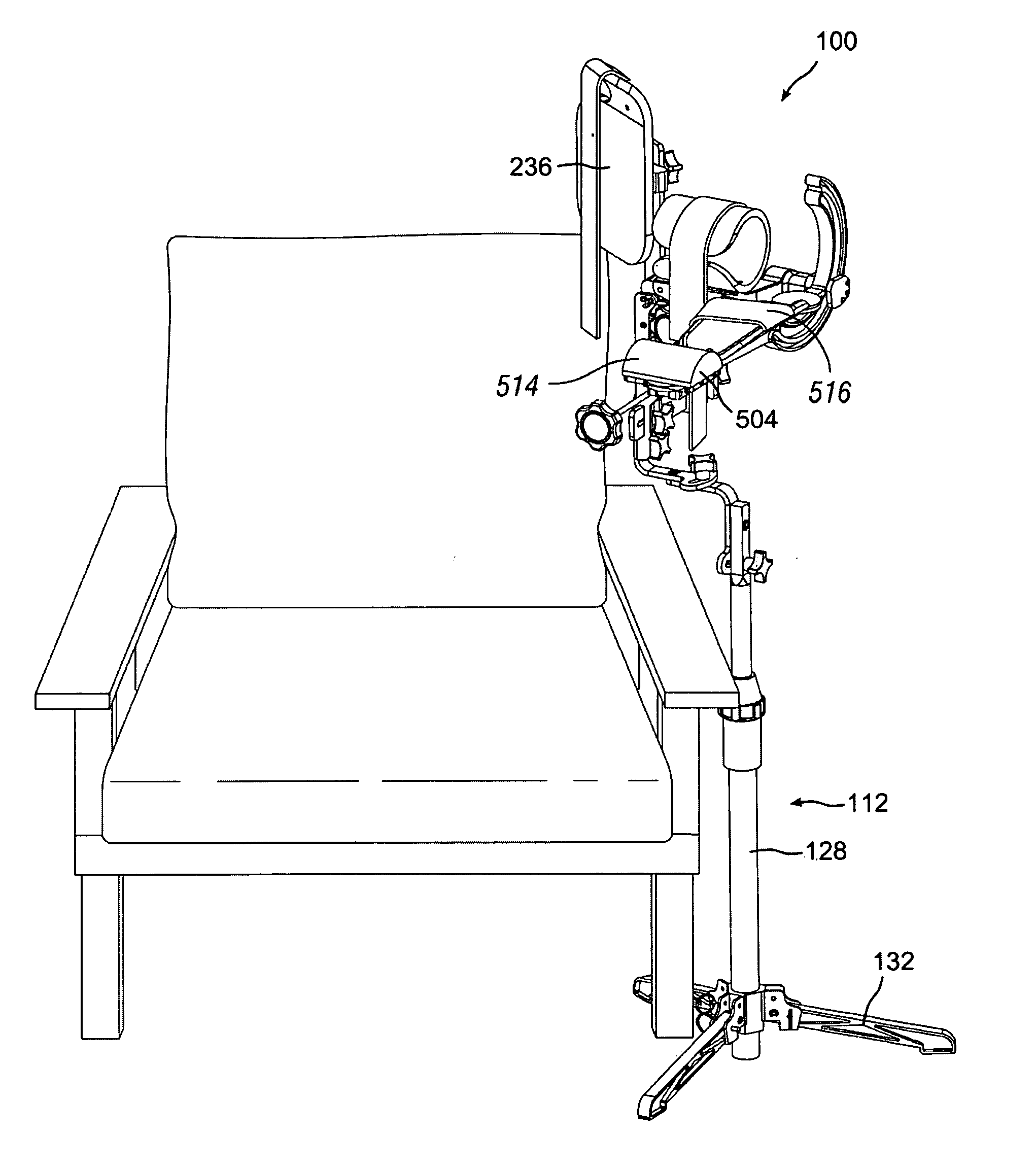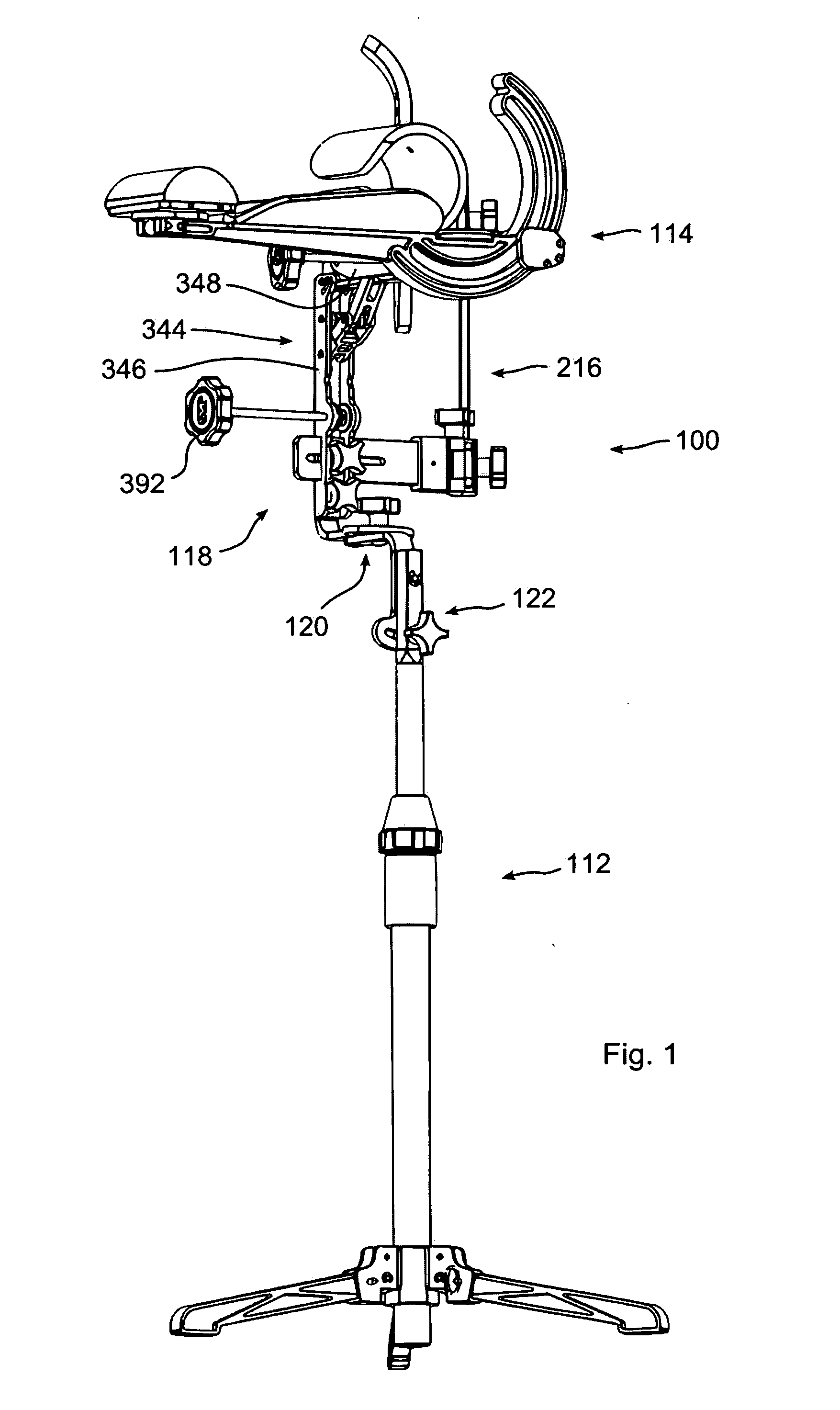Shoulder ROM Orthosis
a shoulder and joint technology, applied in the field of shoulder rom orthosis, can solve the problems of limiting the range of motion of the joint, affecting most people do not appreciate the complexity of joint motion, so as to improve the overall amount of tissue stretch achieved, the effect of reducing the overall treatment tim
- Summary
- Abstract
- Description
- Claims
- Application Information
AI Technical Summary
Benefits of technology
Problems solved by technology
Method used
Image
Examples
Embodiment Construction
[0057]The invention relates to a ROM device for stretching tissue, such as the connective tissue around a joint, between at least a first and second body portion, in one aspect of the invention, utilizing the principles of stress relaxation, and possibly also creep. As previously identified, treatment protocols based on principles of creep involve continued tissue movement and deformation under the application of constant loading, while treatment protocols based on principles of stress relaxation involve varying loading and constant displacement. Techniques utilizing principles of creep therefore allow joint position to change over time as tissue stretches in response to the applied load, whereas techniques utilizing stress relaxation maintain a constant joint position while allowing the applied load to vary over time—usually to diminish or lessen as the tissue stretches. Relaxation occurs because of the realignment of fibers and elongation of the material when the tissue is held at...
PUM
 Login to View More
Login to View More Abstract
Description
Claims
Application Information
 Login to View More
Login to View More - R&D
- Intellectual Property
- Life Sciences
- Materials
- Tech Scout
- Unparalleled Data Quality
- Higher Quality Content
- 60% Fewer Hallucinations
Browse by: Latest US Patents, China's latest patents, Technical Efficacy Thesaurus, Application Domain, Technology Topic, Popular Technical Reports.
© 2025 PatSnap. All rights reserved.Legal|Privacy policy|Modern Slavery Act Transparency Statement|Sitemap|About US| Contact US: help@patsnap.com



